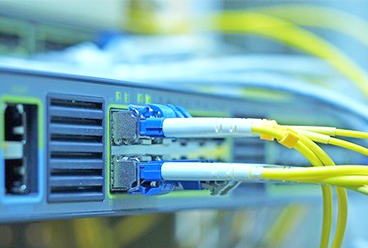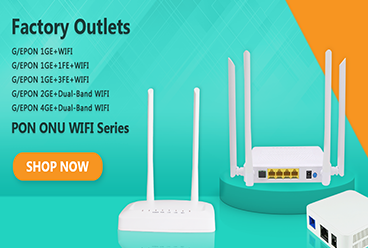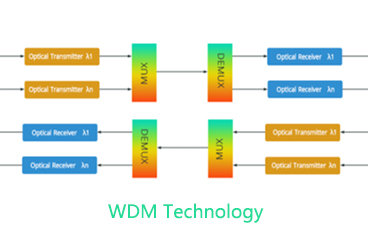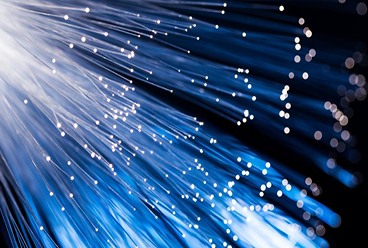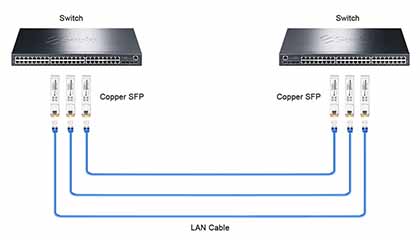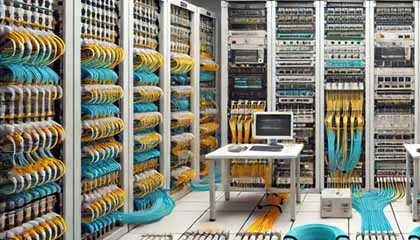Building a Small ISP Network Involves Complex Technical and Operational Details. Below is a Preliminary Discussion on the Three Key Areas: Network Infrastructure Design, Equipment and Hardware Products, and Network Services and Technical Support.
1. Network Infrastructure Design
Network infrastructure is the core of ISP operations, determining the network's coverage, service quality, and scalability. It usually includes the design of the backbone network and the access network.
Backbone Network Design
The backbone network is responsible for transmitting large volumes of data and is the bridge connecting users to the global internet. For a small ISP, backbone network design can take the following approaches:
Fiber Optic Backbone: Fiber optics offer high-speed, low-latency, and high-bandwidth transmission, suitable for densely populated urban areas or business centers. Small ISPs can reduce construction costs by sharing or leasing existing fiber optic infrastructure from larger operators.
Wireless Backbone: For remote or geographically complex areas where building fiber is not economical, microwave links, millimeter-wave, or satellite links can be used as the backbone network. Although not as fast as fiber, these options are relatively inexpensive and quick to deploy.
Access Network Design
The access network connects users to the ISP network, divided into wired and wireless solutions:
FTTH (Fiber to the Home): Provides users with ultra-high-speed and stable connections. The advantage of FTTH is its large bandwidth, low signal attenuation, and high stability, making it suitable for cities and high-demand areas. When designing FTTH, fiber backbone cabling must be laid and connected to each user's home or office.
FTTB (Fiber to the Building) + Ethernet: In multi-story buildings, fiber enters the building and then distributes through Ethernet to each user. Compared to FTTH, this solution reduces the cost of laying fiber, suitable for multi-tenant buildings.
Wireless Access (e.g., 4G, 5G, or Wi-Fi): Suitable for areas with low population density or where fiber laying is difficult. Wireless access can be provided by setting up wireless base stations or using Fixed Wireless Access (FWA), with relatively low initial costs.
POP (Point of Presence) Setup
POP is the bridge between the backbone network and the access network, usually located in core areas or edge data centers. Small ISPs can connect to the global internet by leasing space in local data centers or building small POPs. To reduce latency, the POP location should be as close to users as possible and provide redundancy to handle network failures.
Connecting with Upstream Operators
Small ISPs need to connect with upstream telecom companies or internet exchange points (IX) to obtain international bandwidth. Many small ISPs connect with major operators and lease their international gateway bandwidth or interconnection bandwidth.
2. Equipment and Hardware Products
Building and operating an ISP network requires selecting reliable, high-performance hardware to ensure network stability and performance. Equipment is divided into core network devices, fiber optic devices, customer terminal equipment, and more.
Core Network Devices
Core Routers: Core routers are the "brain" of the network, responsible for managing the routing and forwarding of data flows. For small ISPs, choosing high-performance, multi-interface routers can effectively handle large data flows between the backbone and access networks.
Edge Routers and Switches: Edge routers connect user equipment to the core network. They need to support multiple protocols (e.g., BGP, OSPF) and have high throughput. Switches handle data distribution in the access network, ensuring smooth connections between users.
Fiber Optic Devices
OLT (Optical Line Terminal): The OLT is the core device in an FTTH network, distributing upstream high-speed data flows to multiple users' optical network units (ONU/ONT). OLT devices support multiple interfaces and bandwidth allocation strategies to ensure efficient network operation.
ONU/ONT (Optical Network Unit/Terminal): The ONU or ONT is the user-side device that converts optical signals into electrical signals, providing internet access for homes or offices. These devices should support various speeds (e.g., 100Mbps, 1Gbps, or 10Gbps) to meet the needs of different users.
Fiber Jumpers and Optical Modules: Used to connect equipment and transmit signals, fiber jumpers and optical modules are essential parts of the infrastructure. High-quality fiber optic products can improve network stability and reduce signal attenuation. Sopto Technology's fiber products can be an excellent choice.
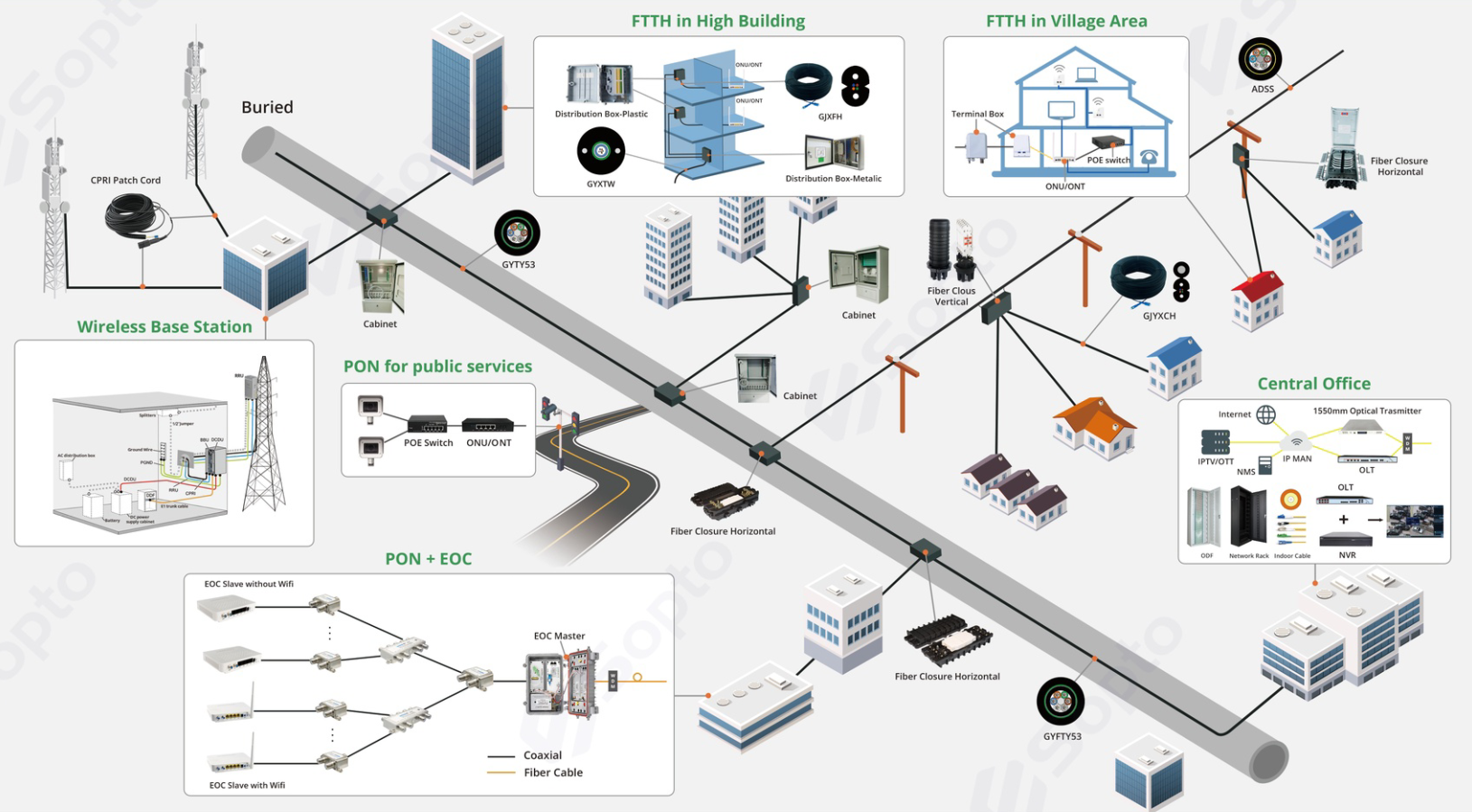
Wireless Access Devices
For wireless access networks, the following devices are needed:
Base Station Equipment (eNodeB/gNodeB): If the ISP plans to offer 4G or 5G access services, wireless base stations need to be deployed to communicate wirelessly with user equipment. Modern base stations support MIMO (Multiple Input, Multiple Output) technology, providing higher speeds and wider coverage.
Wireless CPE (Customer Premises Equipment): These devices are installed at the user end, receiving wireless signals and providing internet access, commonly used in fixed wireless access solutions.
Customer Terminal Devices
Home Gateways and Routers: ISPs usually provide home gateways or Wi-Fi routers to residential users. The devices should support the latest wireless standards (e.g., Wi-Fi 6) and handle high-speed connections.
SME Equipment: For small and medium-sized enterprises, more professional terminal equipment is provided, such as routers with multiple WAN ports or VPN gateway devices to ensure network stability and security.
3. Network Services and Technical Support
Operating a successful ISP not only relies on hardware and network design but also requires reliable network services and technical support to ensure network stability, timely issue resolution, and enhanced user experience.
IP Address Management and Allocation
ISPs need to allocate IP addresses to the internet, usually applying for an Autonomous System Number (ASN) and obtaining IPv4 and IPv6 address blocks from organizations like APNIC. IP address management systems (e.g., IPAM) help track, manage, and automatically allocate addresses.
Network Management and Monitoring
Monitoring Systems: Deploy network monitoring systems (e.g., Zabbix, Nagios, SolarWinds) to monitor network devices and traffic in real-time. The SNMP protocol can be used to monitor the status of devices, quickly identifying and addressing potential faults.
Traffic Analysis and Optimization: Technologies like NetFlow can analyze network traffic, identify high-traffic applications, and potential bottlenecks. Small ISPs can use this data to optimize traffic paths and ensure network smoothness.
Technical Support and Customer Service
Customer Support Center: Establish a 24/7 customer service and technical support team to ensure that users can resolve problems quickly. Provide multi-channel support, including phone, email, online chat, and on-site assistance.
Network Fault Handling: Set up a quick response mechanism and backup plans to ensure fast service recovery in case of equipment failures or network outages. Key equipment should have redundant backups.
The above content provides a preliminary discussion on the three key areas of building a small ISP network: network infrastructure design, equipment and hardware products, and network services and technical support. The content is for reference only, and we welcome further communication.
Tags : ISP, ISP Network, Fiber Products, FTTH
— END —




